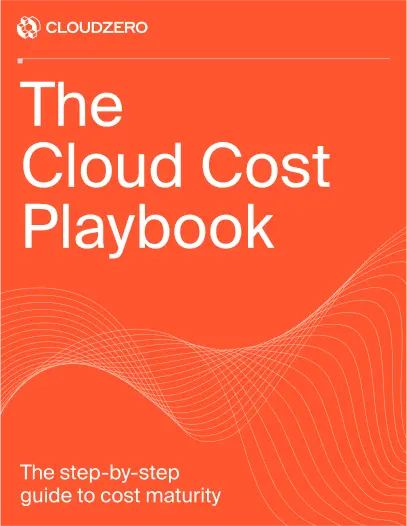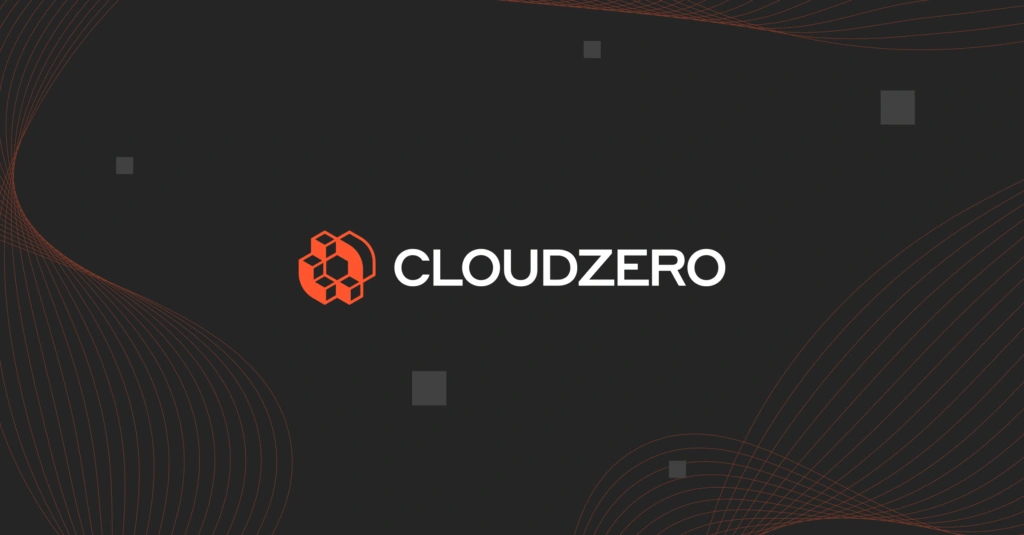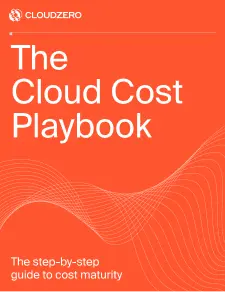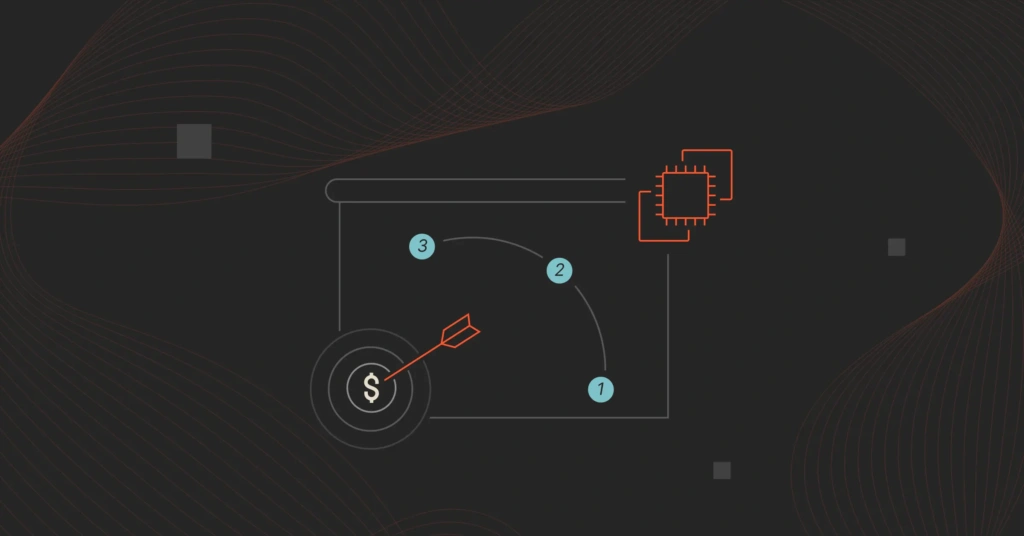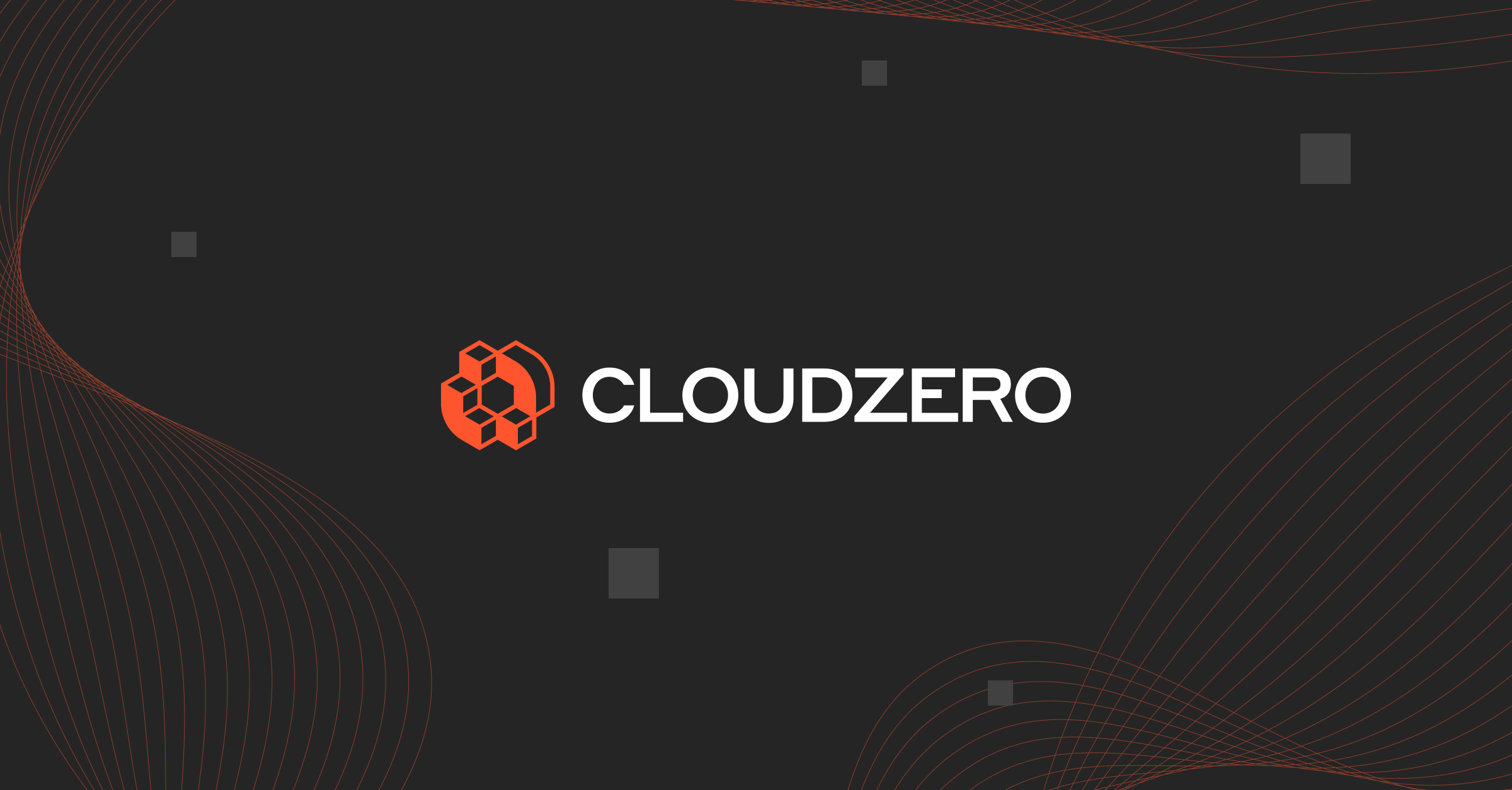In the past couple of months, after nearly a decade of huge returns and steady growth, the tech industry has officially slowed down.
Companies are tightening their belts — laying off employees, freezing spending, and lowering budgets. If you work in tech right now, it’s likely you’ve felt it.
For many organizations, that means instead of the “growth at all costs” mindset we’ve seen in previous years, companies are doubling down on improving their operating metrics, preserving cash in preparation for the faucet of easy capital to be turned way down.
The knee jerk reaction in this environment is often to quickly cut costs –starting with headcount, then moving on to purchases, such as software.
For engineering teams, cloud hosting costs (which are often the second highest cost after head count) are an obvious place to look for savings.
However, cutting costs in the cloud has a cost. With the exception of some simple optimizations (e.g., switching off an extra CloudTrail), many optimization projects require engineering work, like modernizing and re-architecting applications — or doing work to switch to a different service. Even for simple projects, it can take focus away from other priorities.
In other words, it may save money, but it’s far from free.
The problem is, too many teams look at optimization as just a “cost cutting” exercise, where on an incremental basis, they stop and dig into their bill to see if there are ways to save. With our customers, we call this “looking for coins in the couch”.
While there’s nothing wrong with finding areas to save on your bill (especially if you manage to find some quick, low effort wins) it’s a narrow view of optimization that can potentially lead to distraction and misplaced effort.
When you’re running in the cloud, your cloud bill should be your fuel for innovation — and spending less isn’t always the right answer.
Instead, when we work with organizations, we encourage them to think in terms of cloud cost intelligence, rather than optimization.
Here’s what that means — and how you can do it too.
Shifting From A Cost Optimization To Cost Intelligence Mindset
Traditionally, cloud cost optimization has been about identifying ways to save money.
For example, if you look to AWS’ content resources, you’ll see that they recommend their customers start with discounting instruments like Reserved Instances, Savings Plans, and Spot Instances. Then, they suggest you look to find waste in services such as Amazon S3 or EBS volumes.
Here’s the thing — this view is only a sliver of what you could possibly do.
Imagine if you were an engineer working on designing and manufacturing cars. You get orders from your executive team that they’d like to launch a lower cost economy vehicle. Would you start by negotiating a discount from your rubber and metal suppliers? Would you look for aspects of manufacturing where you might be wasting materials?
Of course.
But you’d also do much more. You’d take into consideration how many cars are being sold and at what price, then you’d think about every aspect of the car — from the stereo system to the engine — and consider how you can keep costs low while still building a marketable car.
A cost intelligence mindset means you’re looking at your business —including your products, your go-to-market model, and your costs — and optimizing the most impactful aspects.
Sometimes that means engineering work. Other times it doesn’t.
Cost intelligence isn’t about cutting costs. It’s about improving your operational metrics.
Look To Revenue, Cost, And Risk
While there are a number of ways you can improve your operational metrics, there are really two main levers: reduce money going out and increase money coming in. The most valuable companies know how to balance the two while growing in a way that’s predictable and sustainable.
A cost intelligence mindset looks at your business in terms of those three categories: revenue, cost (in the context of unit economics — which we will get later), and risk.
Here’s a useful framework for areas you can consider, which we will dive into deeper.
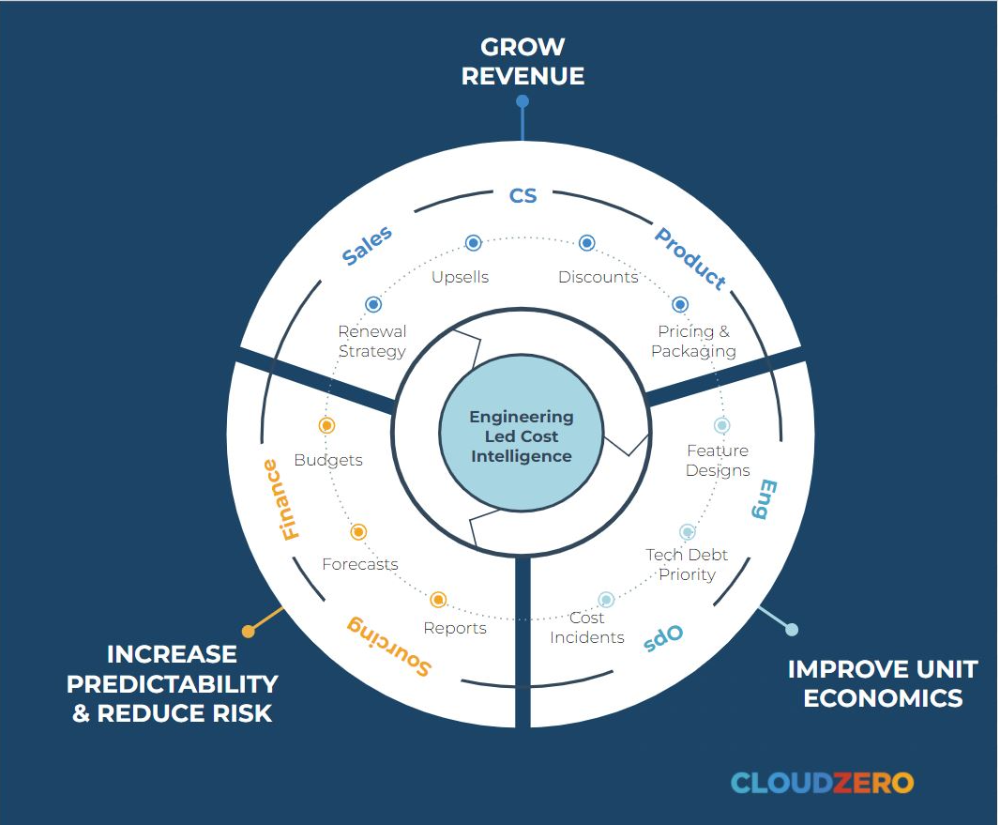
Getting To Intelligence: Start By Organizing Costs
Cost intelligence is only possible when you have a foundation of visibility — which doesn’t just mean knowing how much you’re spending. It means understanding why you’re spending and what you’re spending money on.
- How much does each of your product features cost?
- How much does it cost to support a customer?
- How much would the cost of a feature change if ten customers were using it at once? One hundred?
Many companies look at “hosting costs” in a single bucket, or in just a few buckets like “R&D vs. OpEx”. Instead, granular visibility, aligned to different aspects of your business is essential.
We won’t cover the “how to” of organizing spend into intelligence in this post, but we have many other resources like this one to help you learn more.
Now, let’s dive into what you can do once your costs are organized.
Cost Intelligence And The Three Key Business Drivers
1. Improve unit economics
If your business is growing, your cloud bill likely is too. It costs money to support every new customer or user — so escalating cost can be a sign of a healthy business. The key is to keep an eye on your unit economics.
We often meet companies after their CFO has noticed a new zero at the end of the bill and declares they’re spending “way too much!”. But when pressed further, they’re not actually even sure what too much or too little looks like.
Unit economics puts costs into perspective, helping both technical and finance teams understand whether growth is healthy or not. In an ideal world, the average cost to support a customer, user, or whatever metric is important to your company, should go down as the bill rises.
Once you have visibility into unit economics, you can challenge your engineering team to improve them (or keep them at status quo, if they’re already healthy). Engineers are smart, and, given the right data, they will make decisions in the best interest of the business.
Here are a few ways they can incorporate cost intelligence and unit economics into their engineering culture processes:
- Think of cost as a kind of technical debt, alongside performance and other metrics – Consider which applications or microservices cost the most and whether they should be prioritized as technical debt. What would be the impact on unit economics for a given optimization project?
- Monitor costs in production – Continuously monitor for trends and anomalies to ensure unit costs stay steady or go down, rather than being surprised at the end of the month.
- Consider unit economics during design and planning – Think of cost as a non-functional requirement. Consider cost to build a product or feature, plus cost per user, interaction etc. Proactively ensure that the economics fit with your go-to-market plan.
- Optimize the most impactful areas of your architecture – Rather than just cutting costs across the board, consider which areas would be most impactful. Is your most popular product also your lowest margin? Do you have a high-cost feature with extremely low customer utilization that you should sunset or feature flag?
With this kind of relevant intelligence, engineers can consider cost as a relevant data point throughout the entire software development life cycle.
2. Grow the top line
It’s not uncommon, especially for SaaS companies, to have some customers with thin or unprofitable margins.
Surprisingly, it’s also rare that this data makes it to the go-to-market team, who is ultimately making the decision about pricing, packaging, renewals, and more.
One aspect of a cost intelligence mindset is ensuring that those who are deciding how to sell your products also understand the costs. Likewise, engineering should understand how a product will be sold, so costs can be appropriately constrained.
Here are a few ways cost intelligence can drive revenue:
- Understand individual customer profitability – If your margins are upside down on certain customers, you need to figure out how to correct the problems. You could increase their prices at renewal, reduce the features they have access to, kick off an engineering project to reduce those costly features — or just “fire” them as a customer.
- Use customer profitability to fuel GTM strategy – Are your SMB customers twice as profitable as your enterprise customers? Maybe you should be pouring more resources into marketing and selling into that segment. Are your finance customers storing way more data than insurance companies on your platform? Maybe create segment-specific packages or make storage a premium offering. The options are endless, but you can’t make informed decisions without this kind of visibility.
- Inform pricing and packaging with unit economics – In addition to holding engineering accountable for unit cost, you can set goals for GTM. This visibility can help them manage discounting floors, sales incentives, and more.
3. Increase predictability and reduce risk
Lastly, even if you’re growing revenue while you reduce cost, you’ll still want to ensure you’re managing your metrics for consistency and steady growth.
We recommend finance teams work as partners to other teams, especially product and engineering, to ensure there’s a tight feedback loop around cost. This starts with visibility into the cost of their work, plus a culture of openness, accountability, and autonomy.
Likewise, engineering should partner with finance to ensure they have the business-relevant visibility they need to ensure that cost is in line with the company goals and strategy.
Here are a few ways to improve predictability and reduce risk with cost intelligence:
- Forecast based on unit economics – If you know the cost to support a customer, plus the trajectory of improvement in your average cost per customer, it’s much easier to predict accurate spend based on your sales plans (rather than having to adjust on the fly as you blow your numbers out of the water).
- Treat budgets like guardrails, not gates – Engineering needs to move fast to deliver innovation. Work with them to set a budget, then provide them with visibility. While finance should always monitor a budget, engineering should also be proactive about flagging when it looks like they’ll be over or under, so everyone can plan accordingly.
- Make reports relevant and actionable – There are a few people in an organization who can take action on a summary of EC2 and S3 spend. Most stakeholders think in terms of projects or business units, not AWS services. Translating reports and dashboards into relevant business dimensions helps everyone take action and continuously maintain healthy spending.
With the right kind of visibility, finance should never be surprised by the bill, while engineering should never be making a blind decision.
CloudZero Puts Cost Intelligence At Your Fingertips
Improving your operational metrics requires granular, business-relevant visibility. But achieving that level of granularity can be difficult when all you have is your cloud bill and your list of services, with no way to draw conclusions about how one affects the other.
Think of CloudZero as the cloth you need to wipe clean the dirty, opaque window of your cloud spend, and get a clear picture of what’s really going on inside.
With our platform, you can assign costs to any items you’d like, so you can understand your cost per customer, cost per feature, and even cost per department within your company — without relying on tags. When you have that kind of cost intelligence at your disposal, there’s practically no limit to the strategic maneuvers you can make to grow your business.
